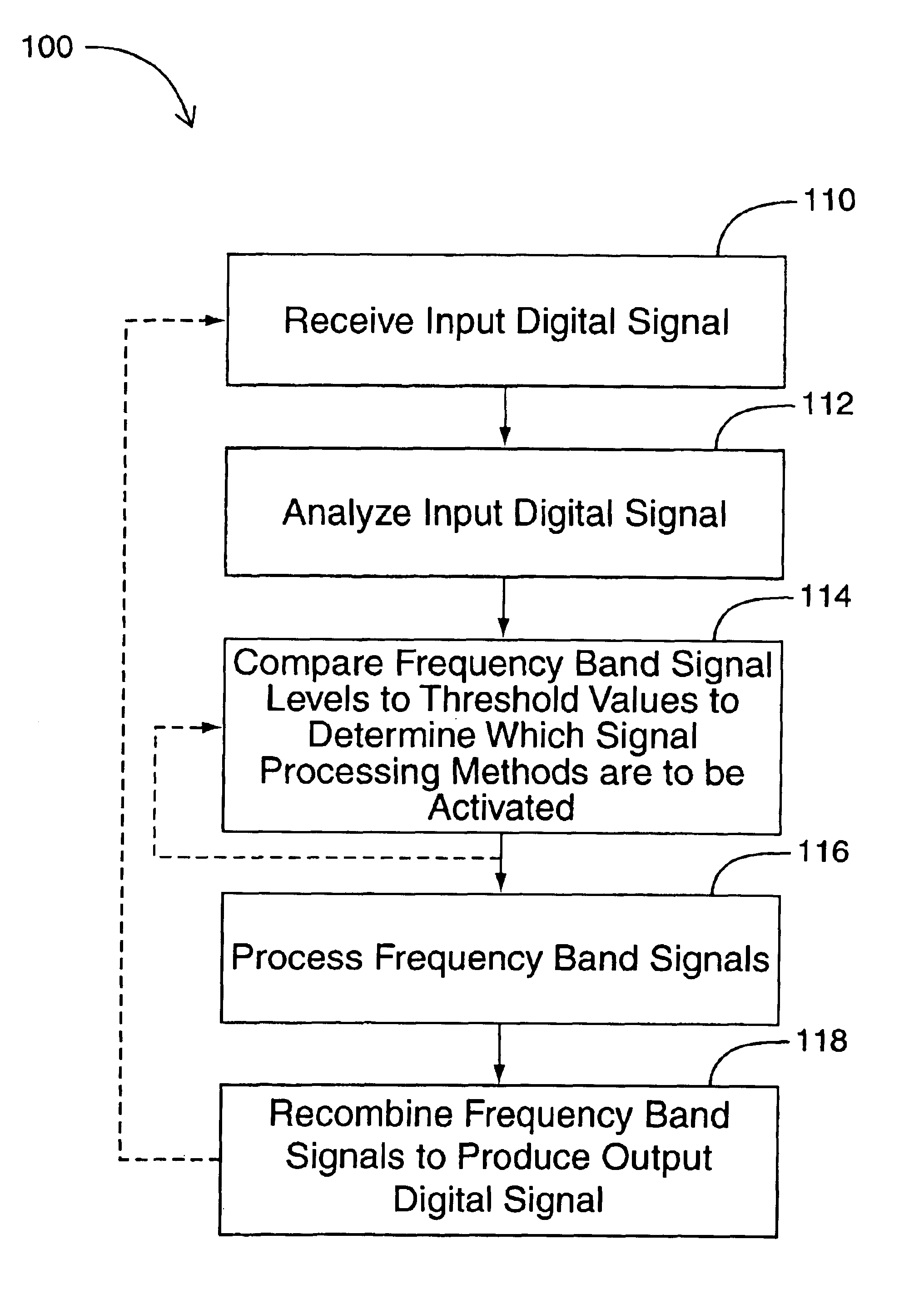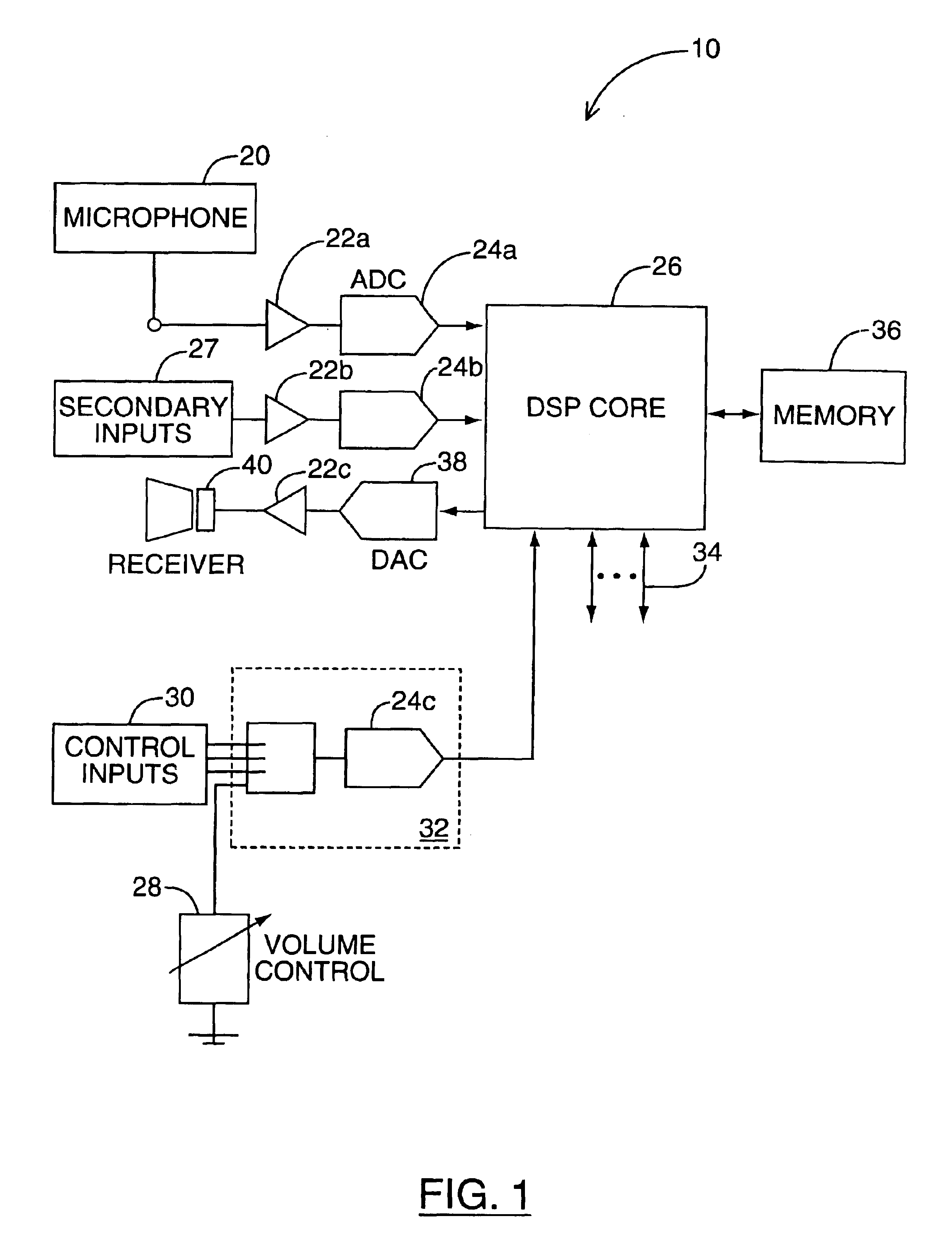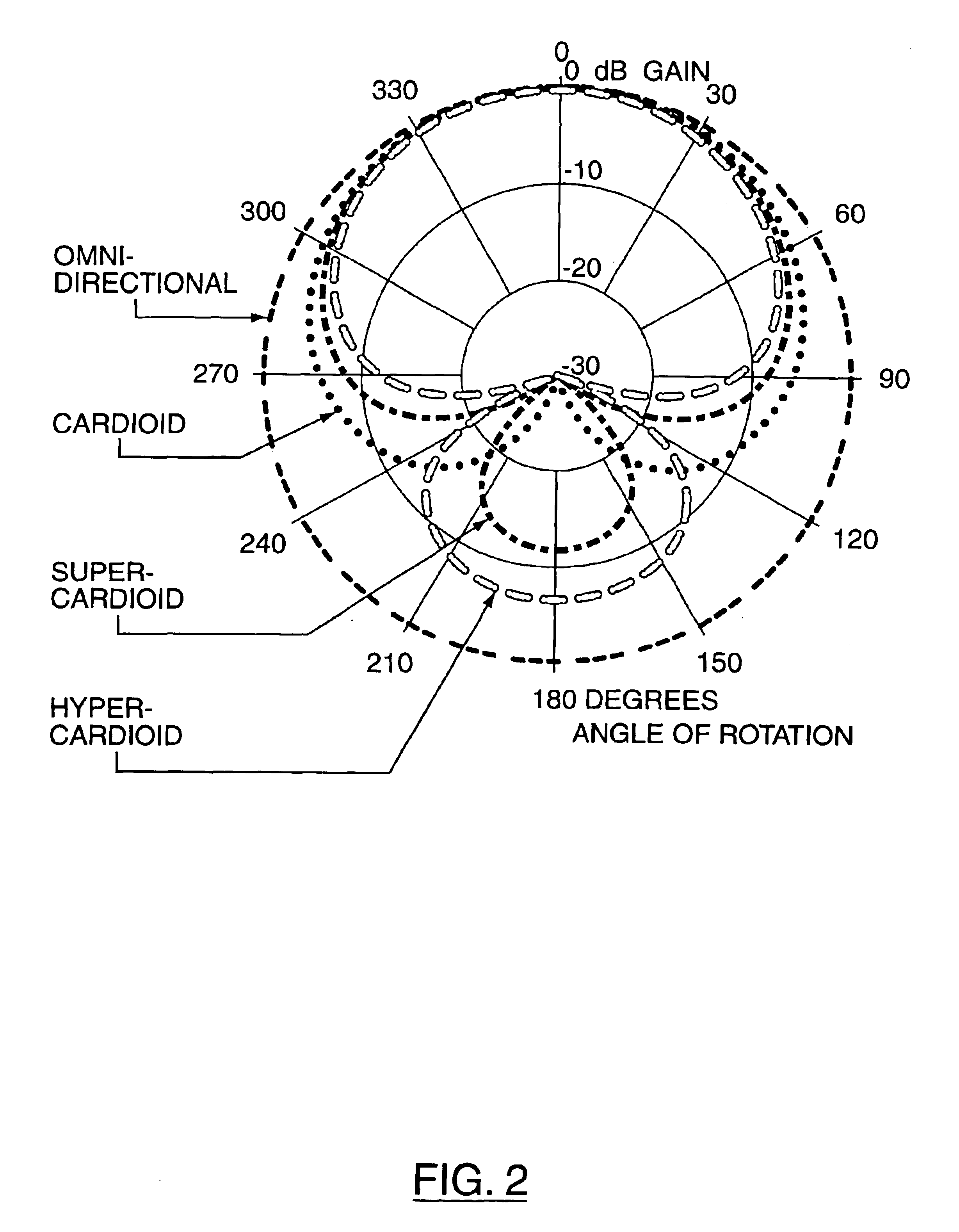Hearing aid and processes for adaptively processing signals therein
a technology of adaptive processing and hearing aids, applied in the field of hearing aids, can solve the problems of difficult user reliability, variable levels of undesirable noise, and difficulty in manually choosing the most appropriate program for any given environment, and achieve the effect of improving the perception of desired sounds
- Summary
- Abstract
- Description
- Claims
- Application Information
AI Technical Summary
Benefits of technology
Problems solved by technology
Method used
Image
Examples
Embodiment Construction
[0032]The present invention is directed to an improved hearing aid, and processes for adaptively processing signals therein to improve the perception of desired sounds by a user of the hearing aid.
[0033]In a preferred embodiment of the invention, the hearing aid is adapted to use calculated average input levels in conjunction with one or more modulation or temporal signal parameters to develop threshold values for enabling one or more of a specified set of signal processing methods, such that the hearing aid user's ability to function more effectively in different sound situations can be improved.
[0034]Referring to FIG. 1, a schematic diagram illustrating components of a hearing aid in one example implementation of the present invention is shown generally as 10. It will be understood by persons skilled in the art that the components of hearing aid 10 as illustrated are provided by way of example only, and that hearing aids in implementations of the present invention may comprise dif...
PUM
 Login to View More
Login to View More Abstract
Description
Claims
Application Information
 Login to View More
Login to View More - R&D
- Intellectual Property
- Life Sciences
- Materials
- Tech Scout
- Unparalleled Data Quality
- Higher Quality Content
- 60% Fewer Hallucinations
Browse by: Latest US Patents, China's latest patents, Technical Efficacy Thesaurus, Application Domain, Technology Topic, Popular Technical Reports.
© 2025 PatSnap. All rights reserved.Legal|Privacy policy|Modern Slavery Act Transparency Statement|Sitemap|About US| Contact US: help@patsnap.com



